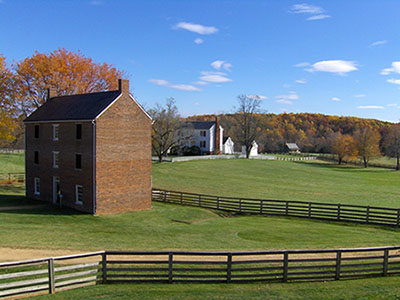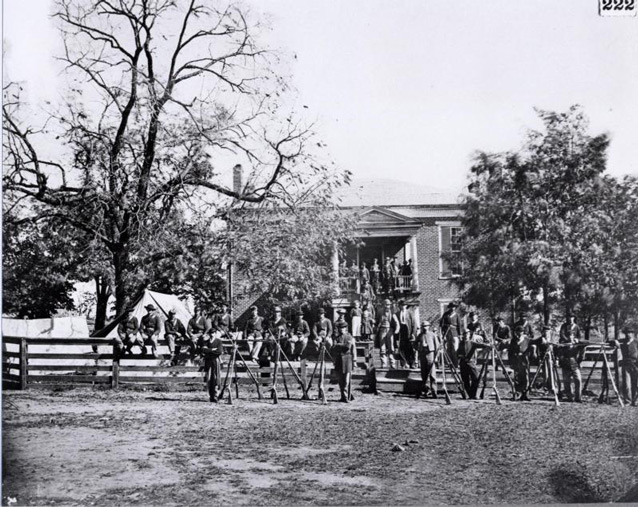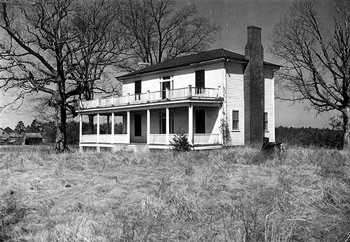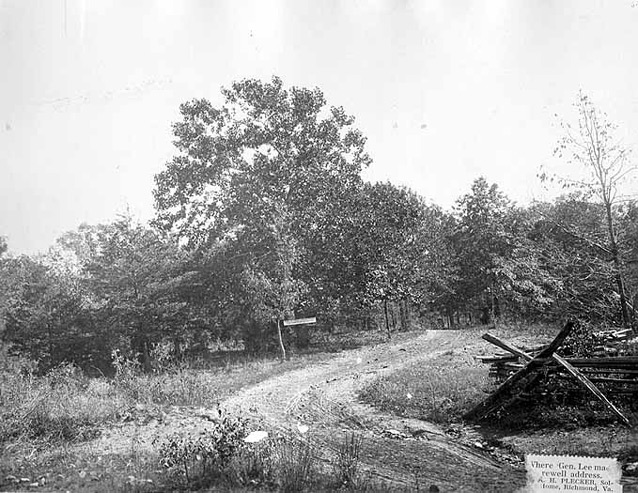The Appomattox Court House cultural landscape marks the beginning of the country's transition to peace and reunification following four years of Civil War. This is the site of General Robert E. Lee's surrender to Lt. General Ulysses S. Grant in April, 1865. The rural landscape is also significant in areas of architecture and conservation, containing late 18th and early 19th century structures that represent the use and commemoration of the site.
"...valor and devotion could accomplish nothing that could compensate for the loss that must have attended a continuance of the contest, I determined to avoid the useless sacrifice of those whose past services have endeared them to their countrymen." General Robert E. Lee in his Farewell Address to the Army of Northern Virginia, April 9, 1865

NPS / Appomattox Court House National Historical Park

NPS /Appomattox Court House National Historical Park
The Appomattox Court House village landscape is comprised of approximately ninety acres at the core of the Appomattox Court House National Historical Park in Appomattox County, Virginia. The broader park landscape includes the nineteenth century village surrounded by an agricultural matrix of open pastures and forested woodlands. The site is historically significant for its association with the final battle of the Civil War and Confederate General Robert E. Lee's surrender to Union Lieutenant General Ulysses S. Grant on April 9, 1865. The park is also significant in areas of military, conservation, commemoration, landscape architecture, and archeology.
The Richmond-Lynchburg Stage Road was established through what was to become Appomattox Court House in 1809. Capitalizing on location, Alexander Patteson opened the Clover Hill Tavern along the road in 1819. In 1845, when Appomattox County was created, his tavern was used for official business until the county courthouse was completed in 1846. Following construction, the village, which had been known as Clover Hill, was renamed Appomattox Court House.

Timothy O'Sullivan, Library of Congress (2014646186)
The Civil War came to Appomattox County in April 1865, when Confederate General Robert E. Lee retreated across Southside Virginia. After Confederate supply trains, wagon trains, and twenty-five cannons were captured by Union forces on April 8, a short battle ensued, and General Lee surrendered to Lieutenant General Grant.
Agreeing upon a neutral site, they met at the home of Wilmer McLean in Appomattox Court House on April 9 to discuss the terms of surrender. Following the war, the courthouse building burned in 1892, and the county seat was moved two miles east to Appomattox Station (now Appomattox). The move precipitated a period of decline for Appomattox Court House, with the houses either rented or abandoned.

NPS
A private effort to commemorate Appomattox Court House for its association with the Civil War was begun in the late 1800s by the Appomattox Land Company under the leadership of General S.S. Burdette. However, in 1891, the centerpiece of the commemorative effort, the McLean House, was sold to another group of investors. Following dismantling of the house in 1893, the building lay in piles rotting near its original site. Plans to create a memorial and park languished until 1893, when ten commemorative iron tablets were erected. The North Carolina Monument followed in 1905. In 1930, the War Department was authorized to acquire one acre of land to erect a monument on the site of the burned courthouse.
In 1933, the monument site was transferred from the War Department to the Department of the Interior. A 1939 Congressional act authorized acquisition of additional land, and in 1940 Appomattox Court House National Historical Monument was created by the Secretary of the Interior. Around this time, interest in restoring the village abounded, probably influenced by recent work at nearby Colonial Williamsburg. Following World War II, restoration and repair focused on the thirteen historic buildings and restoration of historic fields and fences. From 1949 to 1968, the National Park Service also reconstructed fourteen buildings, including the McLean House. Following reconstruction of the courthouse in 1964, the National Park Service visitor center was moved into the building.

Plecker, 1892 (Appomattox Court House National Historical Park Archives, file 233)
Today, Appomattox Court House village offers a cohesive experience of a late nineteenth century rural Virginia community, characterized by narrow lanes surfaced with crushed stone that lead visitors between buildings, outbuildings, fenced yards, orchards, and small family burial plots. Sweeping views are well preserved by adjoining pasture and woodland, ensuring a landscape setting reminiscent of the late nineteenth century. Monuments mark the places associated with the events of April 1865, while the focal point of the village remains the reconstructed courthouse. The reconstructed McLean House is also open to park visitors.
Quick Facts
- Cultural Landscape Type: Historic Site / Vernacular
- National Register Significance Level: National
- National Register Significance Criteria: A, B, C, D
- Periods of Significance: 1865, 1930, 1935-1940, 1790-1968
Landscape Links
- Cultural Landscape Inventory park report
- Appomattox Court House National Historical Park Cultural Landscape Report, Volume II: Treatment Implementation Plan (2018)
- NPGallery Photos
- Video: Cultural Landscape at Appomattox Court House National Historical Park (OCLP, 2019)
- National Register of Historic Places: Appomattox Court House National Historical Park
- Library of Congress: Appomattox Courthouse (HABS)
- Library of Congress: McLean House (HABS)
- More about NPS Cultural Landscapes
Last updated: January 16, 2026
